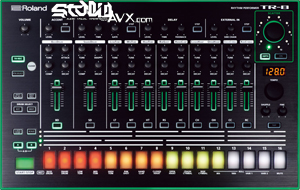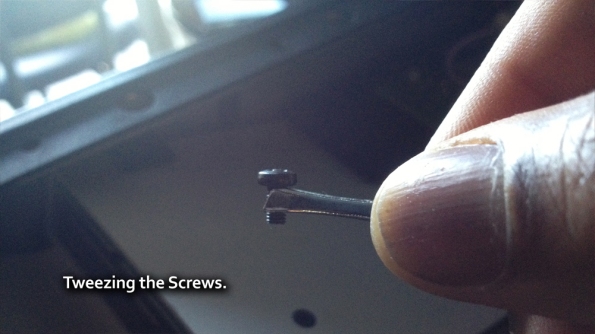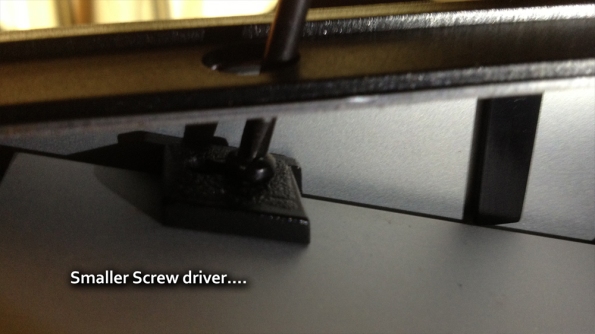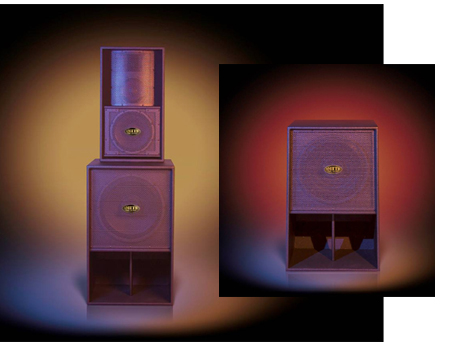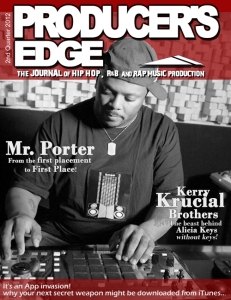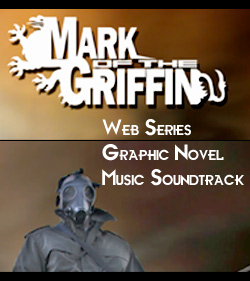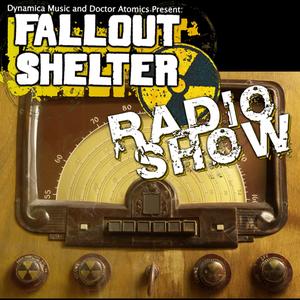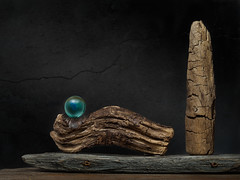Archive
Arturia DrumBrute: Analog Drum Machine & Sequencer
DrumBrute is a powerful beat-making instrument
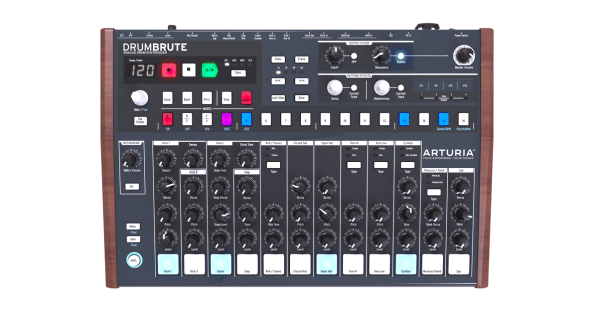
DrumBrute is an all-in-one analog drum machine designed with performance and in-depth sound editing at its heart.
Providing 17 distinct, fully analog drum and percussion instruments with an intuitive sequencer, massive connectivity, a two-mode Steiner-Parker filter, and dynamic performance controls, DrumBrute will take your beat production to the next level.
Create energetic and exciting drum beats with a single, user-friendly device. With its vast sonic potential and smooth workflow, DrumBrute meets and exceeds the expectations of demanding musicians. Bridging the gap between inspiration and technology, DrumBrute offers punchy analog drum sounds, advanced 64 step / 64 pattern sequencing possibilities and ultra-effective performance controls.
Find out more: https://www.arturia.com/products/drumbrute/overview
Arturia DrumBrute Key features:
- Analog powerhouse: DrumBrute contains 17 fully analog drum & percussion instruments, including two kicks, snare, clap, open & closed hats, high & low toms and conga, maracas, rimshot, clave, tambourine, zap, cymbal, and even a reverse cymbal.
- Exciting synth features: the main output contains a highly regarded two-mode Steiner-Parker filter, allowing you to add dynamic frequency sweeps and satisfying bass drops. Not only that, but every drum sound has multiple parameters that can be tweaked to achieve your perfect kit.
- Easy to use, quick to learn: each one of DrumBrute’s 64 sequences can contain up to 64 steps, and can be chained together in a song mode. Despite this massive performance power, punching in your perfect beat is simple and fast. Fans of vintage drum machines will feel right at home with the familiar layout.
- No menus: every feature has its own dedicated button, knob, or pad, so you’ll spend less time navigating endless sub-menus and more time making music.
- In-depth editing: get in the groove with the natural Swing feature, inspire yourself by dialling in some Randomness, mix up your rhythm with Step Repeat, Roller and Looper functions, accent particular drum hits to add some punch to your beat… DrumBrute has a wealth of advanced features that will satisfy even the most discerning musicians and producers.
- Plays well with others: DrumBrute has extensive connectivity and sync options, including MIDI, Clock, 1PPS, 2PPQ, DIN24, and DIN48. This means that DrumBrute will work seamlessly with all of your other modular, synth, and sequencing gear.
- Amazing in the studio: DrumBrute boasts dedicated audio outputs for each instrument channel giving almost limitless options for external processing and multitrack recording; 3.5mm and ¼” headphone outputs so you’ll never have to hunt out an adapter again; and it can act as a fully-fledged MIDI interface to control your DAW. DrumBrute is an essential tool for the modern producer.
- Reliable on stage: with rugged housing, chunky pads, and wiggle-free knobs, DrumBrute can be relied upon to perform show after show. Always striving to improve with every new release, Arturia have created a strong, enduring instrument that’s ready for life on the road.
- Punches above its weight: DrumBrute stands toe-to-toe with the leading drum synths on the market, but at a fraction of the price. No other all-analog drum machine features such inspiring and dynamic features while retaining a sense of intuitive, tactile fun.
- ————————
-
DrumBrute is priced at 449€ / $499.
DrumBrute will shortly be shipping, and will be arriving at your local music store in November. DrumBrute is available to order now from the official Arturia web store, and from retailers worldwide.
For more information on features, specifications and dimensions, visit: www.arturia.com/products/drumbrute
Roland TR-8 Rhythm Performer,TB-3, VT3 Sam Ash
Roland TR-8 overview with TB-3 and VT-3 VIDEO
———
Sam Ash Huntington hosts Roland’s Demo Day as Dave Dickerson stops by to run through the features of the new AIRA line. TR-8 Rhythm Performer, TB-3 Touch Bassline and VT-3 Voice Transformer.
Studio AVX and the Roland TR-8
Sound examples from the Roland AIRA TR-8 Rhythm Performer
Kit samples captured through USB. Elements normalized and fed into Propellerhead Recycle 2.2.4 and exported as individual slices.
Drum kits were left at default positions with no additional tweaks.
Some sounds, including High, Mid and Low Toms are excluded.
Sound Manipulation Examples :
Tuning a Kick
Kick sample is started at 0%, 9, midnight, 3 pm and 100% or 6
Decays a Kick 1 and 2
Tune 12 O’clock
Attack at 0%
Compression at 12o’clock
Snare Tune + Snare Snaps
Taken through six positions and captured
Tune and Compression at 12. Decay at 0
Snare Decay
Tune, Compression and Snap at 12.
Taken through six positions and captured
http://www.StudioAVX.com Better Sounds for Beats
Producer’s Edge XC Subscribers have been sent a package containing all the audio samples and kits.
Check your email for download links.
IsoBuster: Powerful Data Recovery Software Return of the ASR-10 Part II
IsoBuster: Powerful Data Recovery Software
Return of the ASR-10 Part II
The tool for recovering and retrieving the difficult grabs.
–words by Drew Spence
After replacing the floppy drive with an SD card reader, I needed a way to create the images of my floppy disk library so that they could be archived and later transferred to the SD disk- mounted in the ASR-10. The problem is, Ensoniq uses a unique file system that a standard PC floppy drive can’t read. The ‘image’ is a complete and exact copy of the floppy disk stored as a regular file on your PC that can be moved around and manipulated like any other type of data. The ASR-10 will see this image and treat it like an actual floppy disk.
OmniFlop [that doesn’t flop like Reggie Miller]
We need to get Windows to see the floppy drive in an Ensoniq sort of way and so we replace the Windows drivers with the OmniFlop drivers.
[http://www.shlock.co.uk/Utils/OmniFlop/OmniFlop64.htm]
[Griffin’s note: make sure you grab the right drivers for your system. 32 or 64bit]
We had to put in a little extra work to circumvent the Windows 7 driver system, but that process went off without a hitch. You can find out the Whys and Hows on that same Omniflop website under Overview. With the new drivers working, I basically have an ASR-10 floppy drive on my PC.
Enter the Iso
For a very reasonable $39.95 USD, you get a robust and feature laden software recovery tool. It can pull from CD/DVD, Hard Drives, USB Flash drives, Zip drives and on and on. Mind you, I had tried just about every free solution out there, including some recommended by the hardware manufacturers themselves, but none worked. I mostly got two errors No floppy in the device or continuous prompts for formatting. Not good. I spent hours trawling through forums and always saw damaged hardware as the suggested problem. I know my floppy drive worked fine on the PC and I know my floppies had projects on them.
On one site, IsoBuster was suggested as an end all-be all solution and I realized I never thought about using recovery software to get my images made from the ASR-10 floppies. IsoBuster saw my disks and made images easily. The newest update, which is 3.3 reads the ASR-10 formatted Disks and creates an image that is 1,600 KB. That means everything is there and the job is done. They have full instructions on their site and have tech support should you need any help with their products. Now that I have this tool, I’m digging through all my old CDs and DVD+Rs that wouldn’t mount and getting back my lost files. Life is good. http://www.isobuster.com/isobuster.php Demo version is available.
ASR 10 FlexiDrive Installation and Notes
FloppyEmulator.com Return of the Ensoniq ASR-10
—
Part I: FlexiDrive
Harden your Hardware and forget your Floppy – words by Drew Spence
They don’t make them like this anymore. We turn back to a time when a sampler meant you recorded audio and created…samples. The Advanced Sampling Recorder is a classic piece pulled from the days of hardware-only, in a time when a collection of crates was known as your soundbank. Writer Sean Maru has covered the ASR-10 in great detail in his Vintage Series article in issue 01 (page 35). Here, we take a look at ‘dropping the floppy’ and adding a more modern storage system to the ASR-10.
FloppyEmulator.com is all about replacing the floppy drive on your machine with USB and SD mounted media. They cover a wide range of brands, including Kawai, KORG, Yamaha and Roland.
[More info here: http://www.floppyemulator.com/category/applications/musical-instruments/]
For this article, I will focus on my own experience with the ASR-10. I chose the $385.00 USD FlexiDriveMV-SD, which is a multi-volume SD card-reading drive. I could have also chosen the USB reader for the same functionality and cost. The idea is to have EVERY floppy disk saved on a single SD card (including the O.S. Disk). They boast a single card solution can store up to 2,500 Disks and that’s more than enough.
Faceplate and Facepalms
Firstly the disclaimer: Producer’s Edge Magazine is in no way suggesting you follow this article or video as an instructional guide and is not responsible for any damage to you or your equipment. Maintenance and upgrades should only be done by qualified persons and any attempted alterations may void your warranty.
My package from FloppyEmulator.com arrived shortly and included a nice SD card reader and a 4 Gigabyte Kingston SD card.
There are numerous screws on the bottom of the ASR-10. I removed these to lift the faceplate and get access to the internals.
The FlexiDrive sits in the same bay and connects to the exact same cables from the floppy drive. I took pictures as a reference to see how everything was connected. I also took note that the ASR-10 was upside down, so the drive bay would be installed upside down. Although the FlexiDrive came with proper mounting screws, I reused the ASR’s screws. I used two different screw drivers, a normal Phillips for the body screws and a smaller PC Phillips-head driver for the smaller screws that secure the drive’s mounting bay. Since the holes are in a tight space, I used tweezers to hold the screw in place and then screwed down from the space above, in the drive mount’s frame.
Once secured, I only used a few bodily screws to put the faceplate back on since I wanted to make sure the new drive worked before closing up the ASR-10. Nuts! The drive powered up, but the ASR didn’t see it. I opened her back up and re-secured the drives’ connecting ribbon and voila, we are in business. Oh wait! I forgot to make an image of the O.S. Disk before removing the floppy bay. No problem, you can find ASR-10 Operating Disk images on the internet in various places.
AND HERE: http://www.ProducersEdgeMagazine.com/griffinavid/asrosimage.zip
When I start the ASR-10, she tunes the keyboard and then asks for the systems disk. I use the browser on the front of the new FlexiDrive and load the image of the O.S. floppy and the ASR-10 boots up.
Overall, I’m quite happy with this purchase and the tech support from FloppyEmulator.com. It’s a relatively expensive solution, but when weighed against the cost, concern and hassle of maintaining an extensive library of floppy disks, it’s more than worth it. FloppyEmulator.com
**** NOTE: You can load an image of your ASR-10 Operating Disk and save it to the INTERNAL DRIVE of the FlexiDrive and load that image first upon start up.
This means you can skip the step I show of loading your ASR-10 O.S. Image every time you start the ASR-10. This is much better solution. The instructions are located in chapter 2 of the Settings & Functions pdf.
Alternatives Storage Recommendations -10 (well, maybe two, not ten)
There are other solutions for working with a single loading floppy bay emulator. The HxC Floppy Emulator is a hardware unit designed to retro-fit and can be found on a few sites and eBay for ~$70.USD
There are numerous USB to Floppy drives available, ranging from $30 to $60 USD. These work for normal PC floppy drive operations but DO NOT work for reading/writing/emulating our specialized drives and their formats.
My modern PC [Griffin Avid edit: It’s really old, but runs Windows 7 just fine] doesn’t have a floppy bay/drive so I decided to visit the nearest mom & pop computer store and pick one up for $15 USD. I had old spare ribbons sitting around and luckily, my mother board had the right slots. The next mission is to archive all of my old floppy disks, on my PC and then transfer them to the SD card reader on the ASR-10. isoBuster is next.
Brand Spotlight: Smith Audio
Smith Audio
High power high output loudspeakers
–
By now you might be familiar with Davidson Electronics. We featured this wizard-run workshop in issue 08 with DJ Premier. They are one of a small number of manufacturer-authorized repair shops. That certificate of quality means sending your unit to Davidson is the same as sending it back to original factory for work and repairs. Beyond that, I felt like a valued customer. They gave me the honest truth about my options and even guidance on what I could do to save costs. If you’ve ever worked with an IT department or a mechanic, you can understand what’s it’s like to walk away unsure or unsettled. Gear repair is a mix of both and it takes a solid approach to walk way feeling smarter about your gear and have trust in the finished job. Davidson nails this so my curiosity was piqued when they asked me to walk in the back and see what they had cooking.
–
Enter Smith Audio
Down the hall and to the right is an empty room with just a mixer and a set of speakers. The wizards threw a switch and I was blown away. It was a huge sound, but maintained detail. Lots of detail. They sounded incredible, but looked…smaller than they should. I discovered a new brand called Smith Audio that brings us high output, high-powered loudspeakers for live venues, arenas, clubs and concert halls. Their Pro-30 Series is also suitable for theaters, hotels and churches.
What we have next is the story of an American product (wholly manufactured here in the U.S.A.) set to remind us of what’s possible when quality is more important than quantity, when craft saves in cost and service serves the client. To get the full story, PE Mag sat down with Smith Audio for this exclusive one-on-one interview.
–
— We are giving our clients “what they want”…NOT “what they need”. Only those big fat companies with huge ad campaigns insist upon “what you need”. Smith Audio is all about “what you want”. —
–
Could you please tell a little about your personal history and how repairing gear became so important to you? Smith Audio: Servicing gear, in the beginning, was a necessary evil. I ran an entertainment company. At that time, we couldn’t afford “down time” and equipment problems were dealt with “in-house” as much as possible. As my career progressed, I eventually became the service manager at a well known Lighting Distributor that sold intelligent lighting and pro audio equipment. My “hands-on” repair experience became sharper and sharper.
Where does the technical skill come from and what tools are available for learning how to repair a piece you may have never worked on before?
Nothing beats experience. At age 16, I owned a vending machine business. My earliest repair experiences were repairing the vending machines that I sold to various locations. My knowledge of tools came from my childhood. My father owned a couple of hardware stores in Brooklyn. Talk about tools?!?! I was using many tools by the time I was 12…repairing everything from door locks to toasters. I learned, early on, that there are many similarities between seemingly unrelated pieces of equipment.
–
Somewhere there is a transition from providing a service to becoming a manufacturer. Why speakers as your main focus?
Speakers are the very LAST link in the audio chain….the final delivery of sound to your ears comes from the speakers. Having serviced thousands of speakers is what gave me the “vocabulary and criteria” to judge speakers for their qualities, attributes, and shortcomings.
I don’t want you to go into Loud Speakers 101, but what makes up a Smith Audio system? Is it a combination of speakers for lows and highs, an X number of drivers? Is there a need for a sub?
A Smith Audio system is comprised of a highly developed cabinet that was designed around the characteristics of specific drivers/speakers. The 2 most important aspects of our design are: a unique chambering system that eliminates unwanted anomalies in the lower frequencies, while enhancing the projection of desirable sound waves. In conduction with a proprietary crossover, less power is needed to deliver a very potent and coherent sound pallet. Although lower frequencies can indeed come from smaller speakers, subwoofers are designed to deliver the lowest possible frequencies. In order to project the lowest frequencies and create a “sensation” that can only be produced by moving air, subwoofers are specific to these lowest frequencies. Our mid-high cabinets are usually flown, or at least off the floor. Subwoofers perform best when on the floor. Thus, the combination of subwoofers AND mid-high cabinets will satisfy the most demanding audio requirements.
How does your history and familiarity with the top manufacturers influence or affect the design of your own line?
Over the past few decades, I have been inside of nearly every pro-audio speaker for repair purposes. Upon teaming up with Davidson Electronics Corp., my repair experience has expanded exponentially. The Davidson Electronics team consists of some the best technicians I’ve ever known. Over the past 9 years, my relationship with Davidson Electronics expanded and enhanced my knowledge of audio technologies that I have applied to the R & D of the Smith Audio products.
Does you product lean on any of the technology or systems and is there an idea of doing the same thing but cheaper? Are you looking at what you repair the most in their systems and avoiding those parts and components?
Smith Audio made a critical decision, early on, to avoid anything that is dictated by cost. Our goal was simply to produce the best possible product with NO concern for costs…the best woods, the most reliable speakers and drivers, the best crossovers, the best hardware.
At Davidson Electronics, we repair virtually every product in the industry…The best, the worst. One thing we discovered, along the way, was that there is absolutely NO need to outsource anything. Unlike other companies that have hundreds, or even thousands of employees and huge costs of doing business, Smith Audio is a very small company that would rather concentrate on ultimate quality as opposed to a huge ad campaign and trying to disguise outsourced products with fancy graphics and cosmetics. The larger companies spend more time and energy on cosmetics cause they figure the public reacts to the visual aspects of their products. Our products are 100% American made. …and THAT is the extra bonus. The advantage to being 100% American-made makes it even easier to support our products with immediate attention and availabilities. Our warranty is 7 years. No other company offers a 100% American-made product with this warranty. If they did, they would have to charge so much for their product that it would be cost-prohibitive.
–
I see. Once you introduce better components and create a system meant to deliver more sonic power, you then leverage you position as a boutique manufacturer to keep prices down. As I understand Smith Audio is Made in the USA. Seeing that you could save on costs by manufacturing overseas, why decide to have all your products done here?
We never really “made a decision” to be American-made. It just turned out that way. Let’s face it. Any company, regardless of the type of product they manufacture, can be American-made. As these huge companies become greedy for market share, they simply have to outsource so they can continue doing business. Outsourcing has become the magic bullet by which manufacturers can boost profits. Smith Audio will not compromise its “build qualities” for the sake of profit. We believe that profit comes from quality and hard work…Quality and hard work will ultimately lead to a great product. It’s no different for musicians is it Drew? The best artists/musicians don’t compromise their craft for the sake of profit. Go back in time and you will see that the best songs throughout history were not written with a dollar in mind. Ask Paul McCartney or Stevie Wonder, or any great performer whether they wrote their music with a single dollar in mind. Ask ’em… [heh heh].
Let’s talk about deployment in the field; how large a venue can your system support and do you have any real-world examples of Smith Audio in larger spaces?
Smith Audio is about an ever expanding system. It starts with our 1230 and Mobile sub. The more cabinets added, the bigger the system becomes. Yes, just those 2 products can be tailored to smaller venues and/or arranged into huge systems that could cover an arena.
One more reason Swizz Beatz is unbeatzable
In the opposite direction, it’s no secret that a producer’s edge is the use of loud speakers to monitor and tailor their mixes for the club. It’s the reason so many records sound incredible for that sonic space and has helped us properly define the term club banga. Super-producer Swizz Beatz has just had a fresh installation of Smith Audio. Could you tell us a little bit about how this happened and what problems you were expected to solve.
We were approached by one of Swizz’s engineers. He came to us with a dilemma. Swizz needed to monitor his mixes at nightclub levels to fully understand the potency of his mixes. Upon cranking up the levels on some of the world’s greatest studio monitor systems, the amps and drivers were failing simply because studio monitors were never designed to be used in nightclubs. On the other hand, larger PA-type systems typically don’t sound very good in a recording studio. Due to the smoothness and coherency of the Smith Audio products, Swizz was now able to hear a higher quality of sound that has typically not been associated with high power sound reinforcement systems. This has given rise to a new definition for term “reference”. The music has progressed, the listening criteria is progressing too. We believe Smith Audio is ahead of it’s time. Soon, others will realize that high SPL does not mean less sound quality.
We are giving our clients “what they want”…NOT “what they need”. Only those big fat companies with huge ad campaigns insist upon “what you need”. Smith Audio is all about “what you want”. Swizz has exactly what he wanted: High SPL without compromising the quality that he demands. Just ask him!
And he has your flagship system? What level system was Smith Audio replacing?
OMG! At Swizz’s studio, they were struggling with all sorts of products sold commercially…none of which were holding up to the demanding criteria. Yes, Swizz has our “flagship system”…the same system that has become the cornerstone of our live install applications. We are ecstatic that he has found a solution with our products.
What about clarity at these loud volumes? How does Smith handle the lows and critical highs as those decibel levels?
Our tuned chambers, patent pending design, in conduction with mechanical time-alignment are the key elements that make the Smith Audio products so “listenable”. These principles will soon be clearly explained on our new website…coming soon!
I understand this is a high-end company that makes pro-level products. Is there any interest in distilling this technology and system into pro- sumer level products like regular studio monitors?
Wow! That’s a good question. We are presently developing our “Lounge Series”. This new series will address the needs of high quality sound in “near field” contexts. We have pioneered an entirely new high frequency device that may revolutionize high frequency delivery as we know it. No, it’s NOT a ribbon tweeter. That’s all I’ll say for now.
I see. As a final thought, I’d like a summary of what it means to you, personally, to add your product into the stream and what you learned in doing so.
Personally, it has been a long awaited pleasure to serve great talented musicians and engineers. What we have learned is what we kinda suspected all along…and that is: When you stick to your convictions, it’s only a matter of time that others will come to respect your efforts. Our conviction was primarily to serve the needs of those dedicated to their craft. Those people are musicians and the engineers who struggle to present their craft to the rest of the world. Without technology, communication is stifled. Technology must couple with creativity. When they couple, the sum becomes greater than the parts.
And finally, you have a solid list of clients and some high words of praise from notable people. But there seems to be no interest in making Smith Audio a generic household name. What is your final ambition and what should we think about when we come across Smith Audio products?
Uh…actually we would relish making Smith Audio a household name. But the public will decide that. Not us, not a slick ad campaign. This is evidenced by the internet, social media, etc. We know that the “word” gets out faster than ever. Good AND bad. We’re counting on a bright future that will be riding a wave of quality. People talk. Sound travels. There’s no better advertisement than “word of mouth”…so to speak. You’ll hear from us.
Producer’s Edge thanks Smith Audio for taking the time to talk to us. Find out more by visiting http://www.smithproaudio.com/
